Pros and cons of painted walls
At first glance, this is the simplest type of wall decoration; the market offers a wide selection of types of interior paints that are odorless and dry quickly. In painting walls there are features that need to be considered.
Benefits:
- large selection, the use of color;
- the absence of harmful fumes when the paint dries for interior decoration;
- you can paint the walls yourself;
- simple decor can be done with a pattern and texture roller.
Disadvantages:
- great difficulty is preparing the walls;
- emphasizes the roughness of the wall;
- when re-painting the previous layer will need to be removed.
On the picture a gray bedroom with a brick wall and smooth putty walls, a red accent is a bright accent of the interior.
Types of paint
Alkyd paints
- Alkyd Resin Paintare used for painting wood and metal, plaster. After drying, they do not harm health, do not pass moisture and do not change color.
- Oil dries for a long time due to the oil base on the linseed oil, it is used for outdoor work due to harmful fumes. Over time, yellowness appears in color.
- Enamel It has a distinct gloss due to the varnish base; it is used for painting any surfaces outside and indoors. Protects against corrosion, resistant to light and damp environment.
Emulsion paints
They are economical to apply, other types of paints can be used on top of them, they do not have an unpleasant odor.
- Acrylic applied to well-dried walls, suitable for painting walls in rooms with low humidity. It lends itself to good tinting, retains its color under the sun. It does not pass steam and moisture, it is better than others resistant to mechanical stress.
- Latex resistant to washing and abrasion, dries quickly, hides small cracks, is used for painting wallpapers, plasters, bricks. May change color when exposed to sunlight.
- Water emulsion over time, it loses brightness due to color washing off, is suitable for creating relief and texture, has high strength and hides small cracks, reinforcing them.
- Silicone based on silicone resins it has high plasticity, forms a waterproof film, hides small cracks, is applied to any surface. Combined with other emulsion paints and does not allow the development of bacteria.
Textured paint
It looks unusual compared to ordinary painted walls, suitable for interior decoration and creating a unique interior. It happens on a mineral, silicone, acrylic basis.
It is applied with a sponge in blotting movements, if the area to be painted is small, with a hard textured roller with teeth, a comb for glue, and a metal spatula. The relief is created by particles of filler.
Combination with other materials
In the interior, 2-3 types of wall decoration are often used in order to diversify the design.
Wallpaper and painting
Combined in the case of decorating the ceiling with wallpaper and walls with paint, creating an emphasis on the painted wall, the combination of bottom - paint, top - wallpaper.There are also special wallpaper for painting, which can be repainted several times.
Photowall-paper and painting
They are used in the kitchen, corridor and toilet. Walls are exposed to moisture, so wall murals are used for decor.
On the picture bedroom interior with photo wallpaper and neutral walls, the podium serves as a wardrobe.
Plastering and painting
The plaster can be painted on top of the bark beetle, which will give relief to the walls, or combine with painted adjacent walls in the interior of the toilet, kitchen and hallway.
Wood and painting
A wooden wall made of beams or laminate is combined with plain painting of the walls in the interior of the attic, living room, country house.
Stone and painting
Suitable for decorating a fireplace wall in the interior of a living room, a country-style kitchen or a chalet, where the apron is made of piece stone and the rest of the walls are painted in a plain or transitional color. Brick and painting are suitable for finishing a kitchen in the style of Provence or loft.
Brick and painting
The brick can be white or red, and the paint is in tone with the brick, or vary in color.
On the picture eco-friendly kitchen with olive walls and a brick wall.
3D panels and painting
3D panels are suitable for simple but unusual interior design. Solid walls with volumetric panels are suitable for restrained and stylish design, and two-tone painted walls with color panels look good in the nursery or in the interior of abstract art.
Design options
Solid walls are chosen for restrained interiors, such walls serve as a neutral canvas for expressing style in furniture, accessories.
Two different colors
Painting walls with two different colors serves as a rational technique in order to visually enlarge a room, change the perception of the geometry of asymmetric walls, or simply focus on one wall. One wall can be painted in two different colors.
Painting in different colors (more than two)
Painting with several colors in one gamut or a combination of contrasting colors will become an independent decor in the interior. It can be stripes, vertical or horizontal separation of walls, painting all 4 walls in different tones. Within one room, it is better to make one color primary, and leave the remaining 2-3 colors auxiliary.
On the picture one of the walls is painted in three colors with uneven stripes in geometric technique using masking tape.
Stencils
Design using stencils and templates can be done independently by cutting them out of paper and fixing them on the wall. You can also draw borders for design using masking tape glued to a dried base color.
Striped design
Strips of paint stretch or expand the walls, change the perception of the room depending on the location, color and frequency of the strips.
Patterns and ornaments
Suitable for the nursery, you can draw a house, a fence, trees, ethnic ornaments, monograms on the walls of the interior of a child’s bedroom.
Divorce
They can be organized or chaotic; they are created with a brush on dry walls.
Cracks or craquelure effect.
Created with acrylic painting and craquelure varnish, the more varnish, the deeper the cracks. When applying, the roller should be kept upright so that the cracks are uniform.
On the picture The accent wall of the bedroom is made using the cracked paint technique with a backing to match the tone of the walls.
Under the brick
Brick imitation can be done using plaster on a lined wall and traced seams on wet material. After the plaster dries, 2 layers of paint are applied.
Square Painting
Can be done using templates or masking tape. Squares can be plain or colored, of different sizes and positions on the wall.
Texture design
It is created by painting walls with textured paint, which in its composition has acrylic particles and starch. It happens in a dry and liquid state, it can also be tinted. It is applied with a regular or texture roller.For interior design, a special textured paint for interior work is suitable.
Gradient and Ombre
Suitable for visually increasing the ceiling if the dark color on the floor goes to white. A gradient or a smooth transition of color is horizontal and vertical, with a transition to an adjacent wall. It is created by 2 or more colors, where at the junction of colors with a dry roller or brush, the dark color is stretched to the bright zone in one direction.
On the picture partition wall with ombre painting with a smooth smoky transition of gray to white closer to the ceiling.
Using a textured roller or sponge
Effects with a textured roller or sponge are done on a uniformly painted wall, creating the effect of watercolors, bark beetles, waves, cracks, velor or mosaics.
Painting
Art painting in ethnic technique, depicting nature views, animals and reproductions will become an individual feature of the interior with painted walls.
Design with moldings or panels
Creates the effect of niches or furniture facade, add volume. The molding can be colored or white, made of wood, duropolymer, gypsum.
Wall painting color
White
Often used independently in Scandinavian and other modern interiors, it is also a companion for bright, warm and cold colors.
Beige
It does not focus on itself, acts as a backdrop for furniture, is used in classic and modern design. It is combined with white, gold and black painting.
On the picture kitchen interior with a white matte set and beige walls, where a light laminate matches the tone of the paint.
Brown
Brown in a shade of coffee, chocolate, with the texture of a tree is combined with other natural colors, a stone in the interior.
Green
Green in a shade of ocher and pistachio color soothes, suitable for the bedroom and hall. Lime and herbal are bright colors, suitable for children, kitchen. It is combined with raspberry, brown, yellow, white.
Gray
It is the backdrop for the loft style and modern interior, combined with red, black and white, carrot-orange.
Blue
Ideal for a bedroom, a nursery in a classic and marine style. It is also a frequent color of the walls in the bathroom.
On the picture gray-blue interior with plain walls and classic shelves. A green accent brightens the living room.
Blue
Suitable for southern rooms with an abundance of summer sunlight, combined with green, white, blue and red.
Yellow
Yellow for a sunny interior or rooms with poor lighting, combined with orange, green, white.
Lilac
Creates an atmosphere of provence in the kitchen, suitable for any room and combined with natural pastel colors.
Purple
As a magical amethyst draws attention to the interior, it is used in spacious rooms or combined with white painted walls.
Red
As the most active and energetically independent color does not need to be supplemented, but if the apartment is small, it is better to combine red with gold, beige, white. Against its background, white furniture or sets look good.
On the picture two-tone painting with an accent red wall of a tomato shade, which has shelves and a chest of drawers made of natural wood.
Orange
Like yellow, it adds color to the interior, combined with all shades of green, black, gray. Used for balcony, bathroom, hallway.
Pink
Pink in pale shades is used for the interior of a bedroom, a nursery, they draw stripes and drawings using a stencil. It is combined with pale blue, white, black, lemon.
The black
In the interior, it more often acts as a sketch or as a pattern, a companion color that is independently used in large rooms and acts as a backdrop for bright furniture.
Features of painting walls of different materials
Wooden walls
Painted wooden walls not only look aesthetically pleasing, but also extend the life of the wood.Before interior doors or walls made of wood, before painting, remove the old coating and treat it with stain. After drying, 1-2 layers of alkyd or acrylic paint are applied.
On the picture painted in pale yellow wood lining in the classic bedroom interior with gray baseboard and light floor.
Brick walls
Before painting, they clean and wash with water, a week after that all moisture will come out and it will be possible to prime the surface and paint the brick with interior acrylic or alkyd paint. You can age a brick or create smudges. A contrast color can be used for the seam.
Concrete walls
Before painting, you need to clean, make the surface smooth and without cracks, primer, allow to dry and apply epoxy or latex. A repeated layer must be applied immediately to the entire surface of the wall so that there are no differences in shade.
Wallpaper
Wallpaper for painting is convenient in that they can be repainted without driving pigment into the walls. Such wallpaper can also be removed without grinding and surface cleaning. Paint for wall-paper is used on a water basis without solvents. Textured wallpapers facilitate the work and hide the irregularities of the walls.
Drywall
Drywall on a wall or ceiling is painted after filling joints and the entire drywall, as well as grinding and priming. Use acrylic or silicone paint, which is plastic and creates a protective film.
Plaster
The plaster is painted on a clean, dry surface. If chips were noticed during the preparation of the wall, they must be cleaned and sealed. It is painted with a roller in 2 layers with maximum filling of pores.
Photo in the interior of the rooms
Kitchen
The kitchen as a room where you need to wipe the walls, needs a water-based acrylic or latex paint. Neutral colors, contrasting or matching the headset, are suitable for the kitchen interior.
Children
A children's room can be painted with walls with special paints marked, they have a water base and dry quickly. There are also paints with silver ions, which do not absorb moisture and allow you to draw on top of regular watercolors. Color screen designs, stripes, patterns, letters and numbers will do. The interior can easily be replaced by painting the walls in a new color.
Living room
Living room as a platform for the manifestation of creativity, can combine stone decoration and painted walls, several colors and different designs. Suitable water-soluble, textured painting or color combination in the interior.
On the picture the interior of the living room has a wooden ceiling and plain light walls in a country style with an emphasis on furniture from different categories and color palettes.
Bedroom
The bedroom is distinguished by a calm atmosphere and a cozy interior, so you need to choose neutral, natural colors. In the interior, it is better to avoid bright colors or use them as an emphasis on the wall at the head of the bed. Suitable for screen printing, textured painting, stripes and ornaments.
Bathroom and toilet
The bathroom and toilet as wet rooms should be painted with acrylic, latex, silicone paint. Oil painting is not recommended due to the high drying time and harmful odor. You need to paint those areas that do not get water, the area at the sink and bathroom needs to be tiled.
Traditionally, the interior uses a combination of blue with white, white with orange or yellow. For the toilet, you can combine painting with vinyl or photo wallpaper.
Balcony or loggia
The balcony or loggia should be protected with paint from corrosion and fungus. For the interior of an open balcony or loggia, which is separated from the apartment, only paint for outdoor work is suitable. For wooden lining, water-based paints are suitable, for brick or plastic - varnish.
It is often stuffy on the balcony, so a cold palette of colors is suitable, white and orange are also used. When painting, it is important to choose a sunny day without a rain forecast.
Hallway
The hallway or corridor can be painted using the ombre technique with the transition from orange to white ceiling. Used water-based paints in light shades, a combination with decorative stone or textured plaster. A narrow corridor can be expanded with 2-3 horizontal stripes.
Styles
Modern
The style uses plain or two-tone wall painting, combining white with another color. The interior of the nursery uses bright details in stripes, drawings on the wall. The emphasis is on practicality, so an unobtrusive palette and combinations are used.
Minimalism
Minimalism is observed in monophonic painting, a combination of gray or pale blue with white color, decor with wide stripes. Sometimes in the interior contrasting molding or textured paint is used.
Loft
The interior is not limited to a specific color palette, design is often used only on an accent wall. Also, masonry can be painted in ombre technology.
Classic
The interior is expressed in a neutral light background with golden, white monograms, in a blue or black ornament, which is emphasized by tassels and fringe on velvet curtains of emerald or ruby color.
Provence
Provence or French summer interior gloss is recognized in pink, mint or blue walls, olive shades of curtains and textiles. Walls in the interior can be monophonic or striped. To create an individuality, you can make art paintings on the wall in the form of an open window on the summer provence fields.
On the picture Turquoise bedroom in Provence style with plain color walls, classic furniture and floral textiles.
Country
The interior uses a combination of natural timber or stone with brown, mustard, white paint with a whitewash texture.
Scandinavian
The interior is as practical and light as possible, so the walls are creamy, white, less often - sand, blue. For decor, stripes, moldings, 3D panels, a white brick wall are suitable.
Painting walls as a type of finish is used not only for external but also for internal work thanks to paints that are odorless, dry quickly and do not harm health.

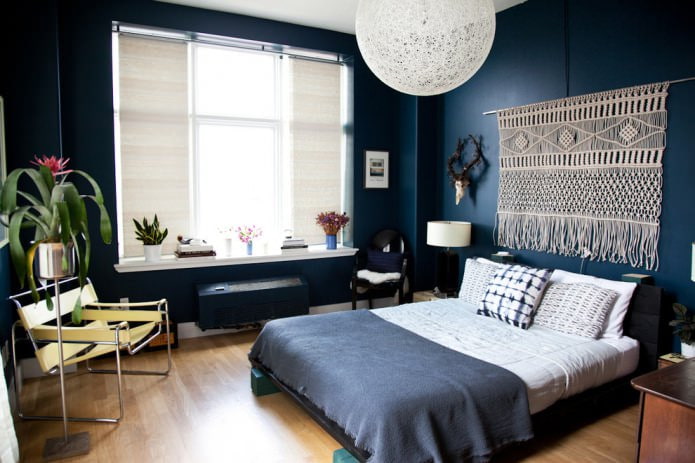

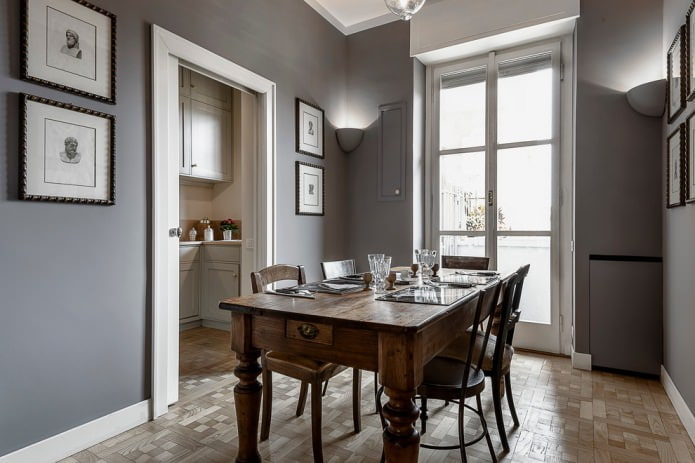
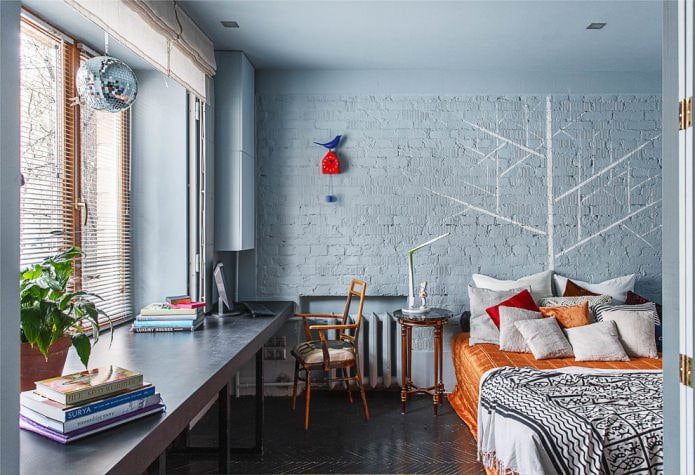

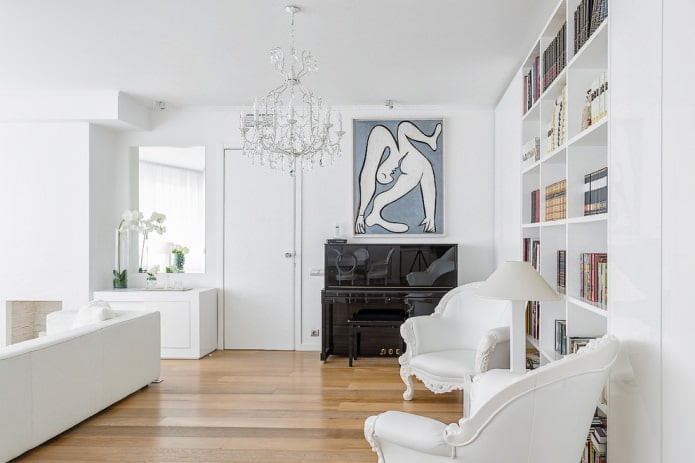

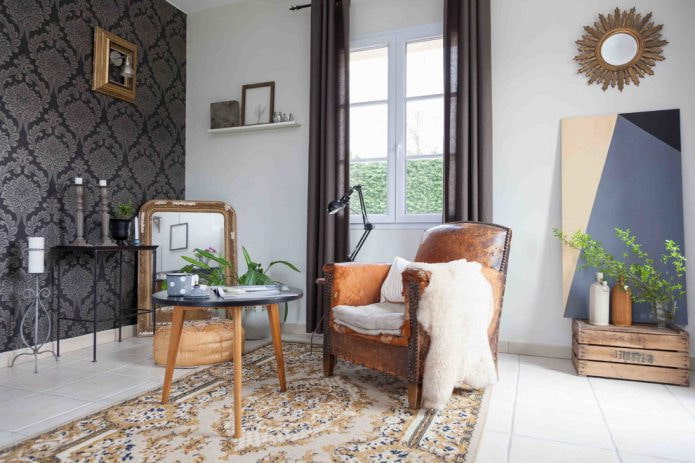
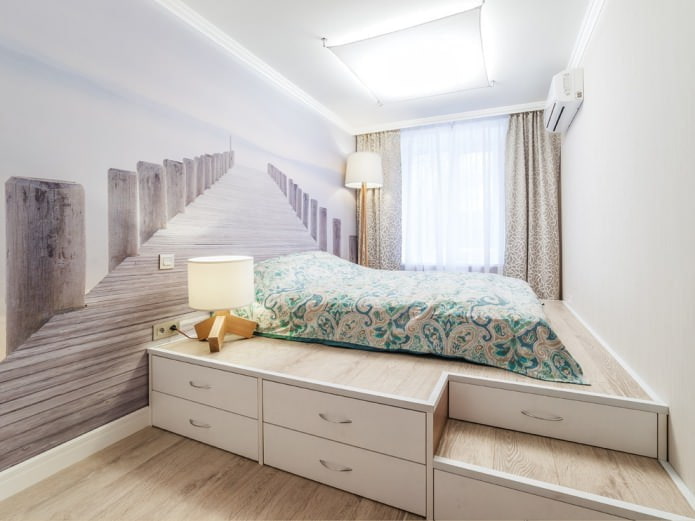
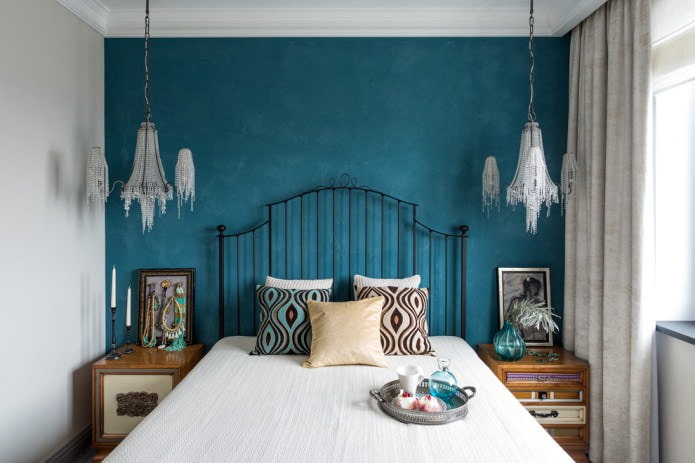
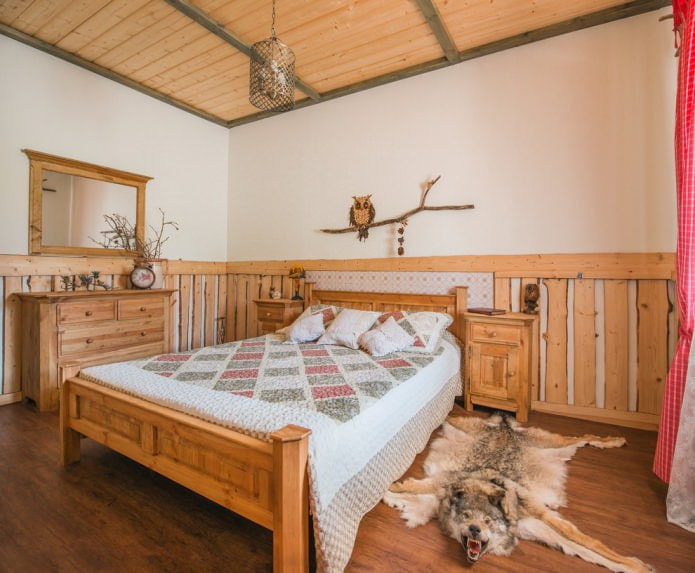

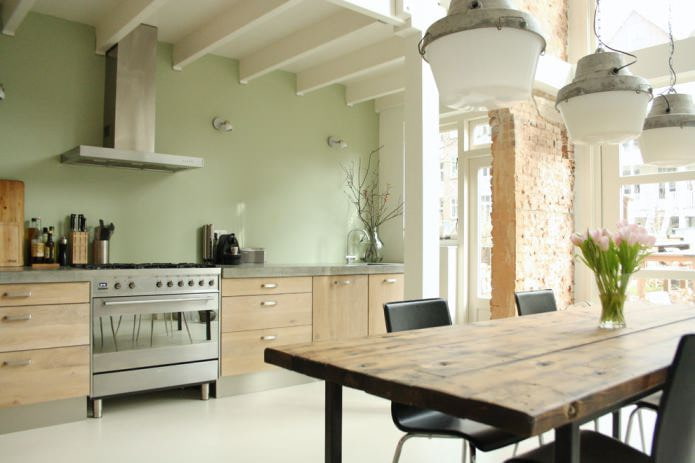

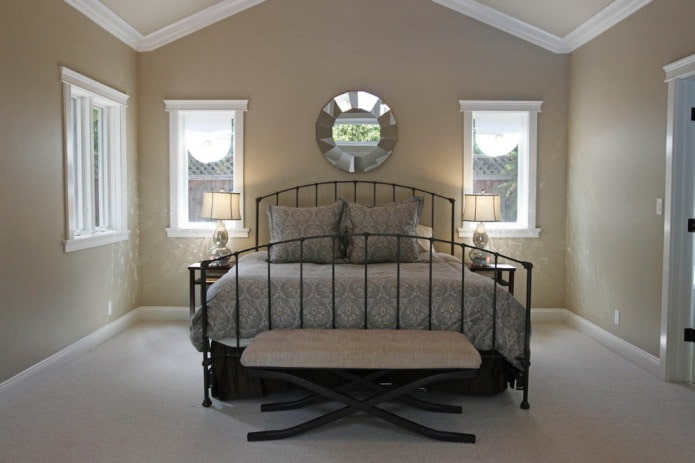
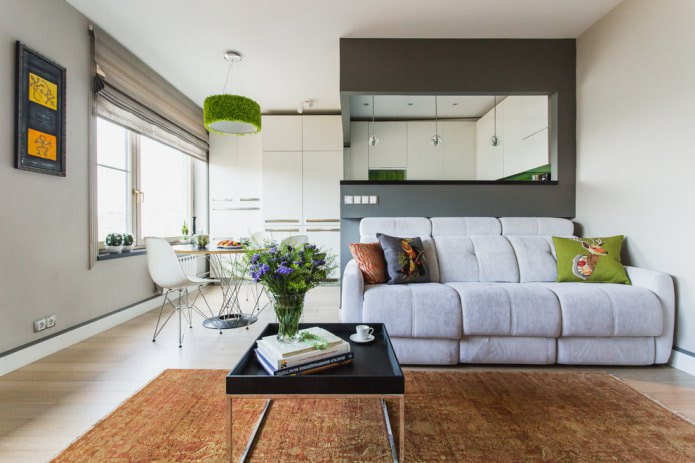

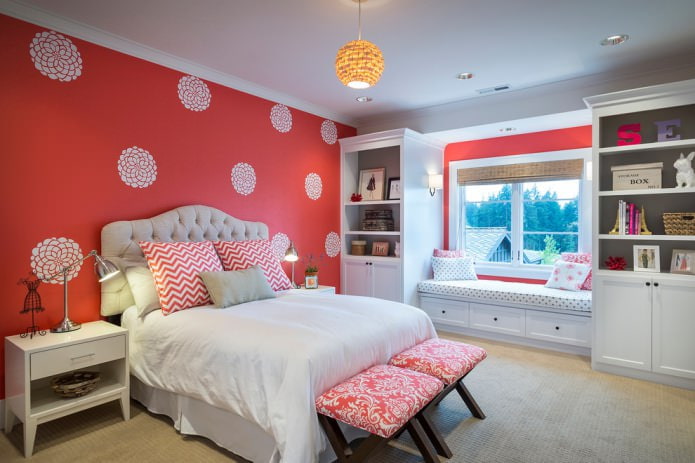
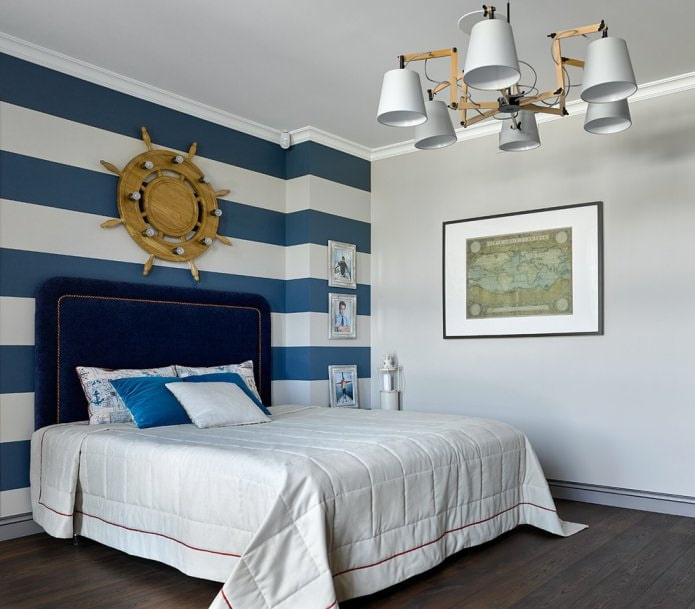
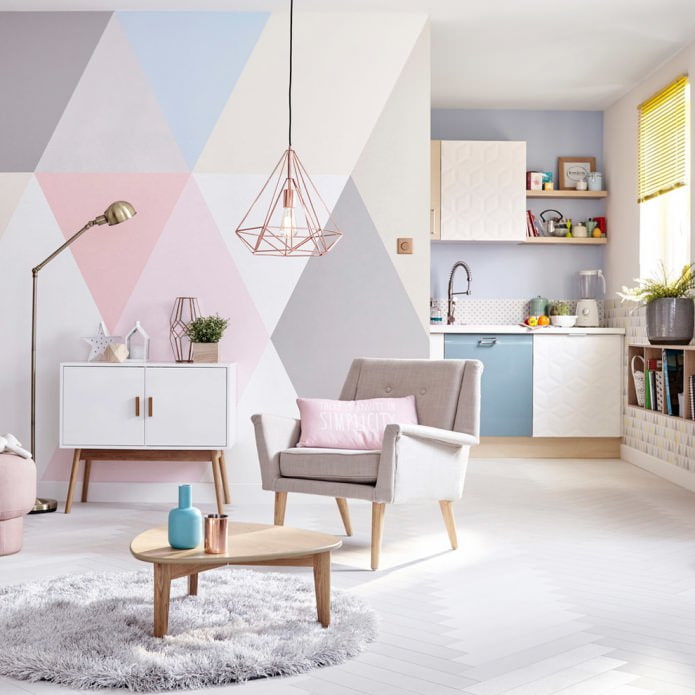
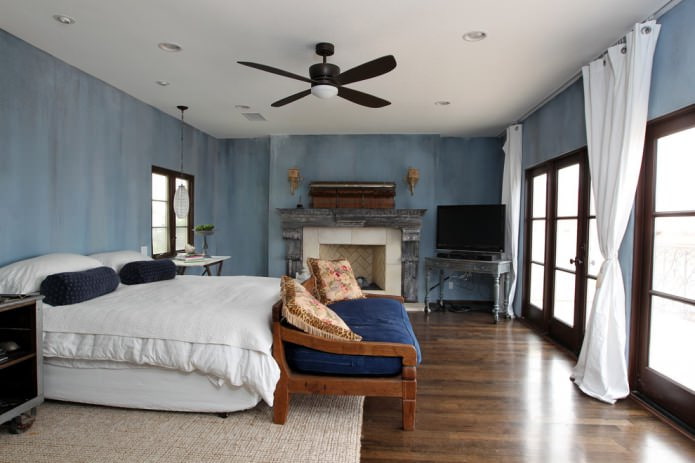

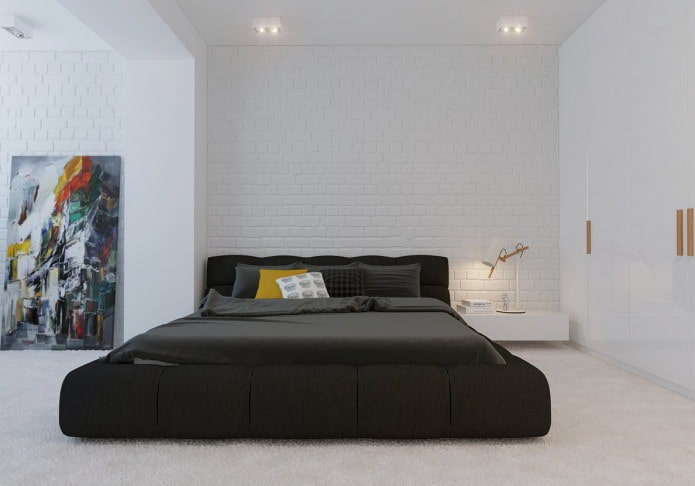
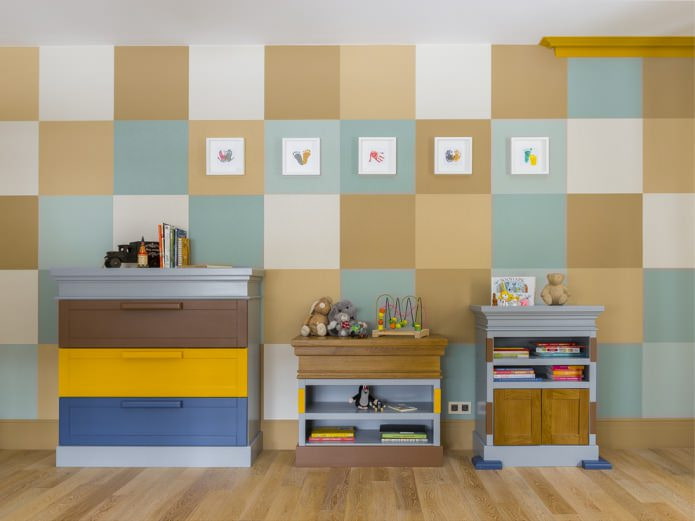

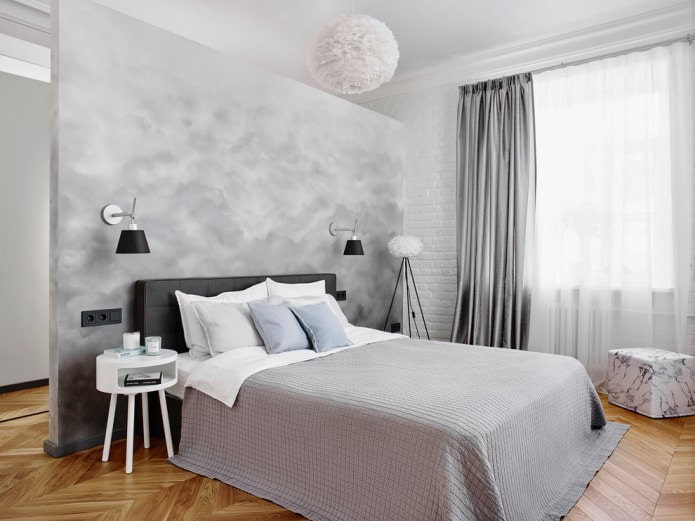
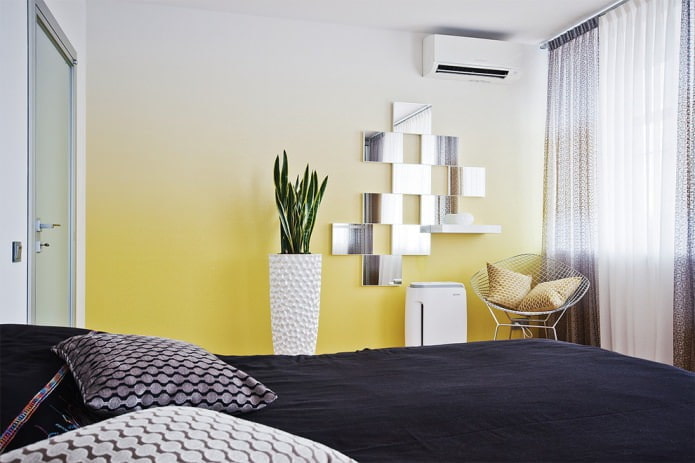
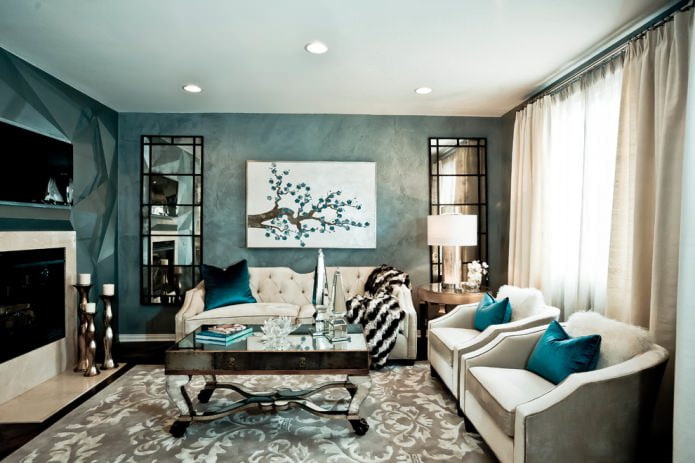
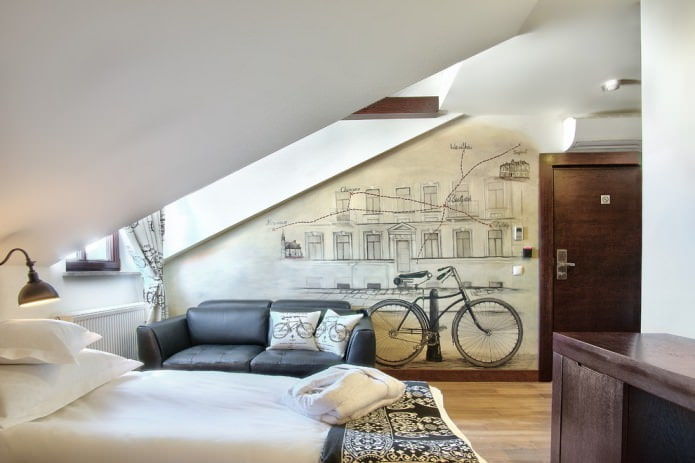
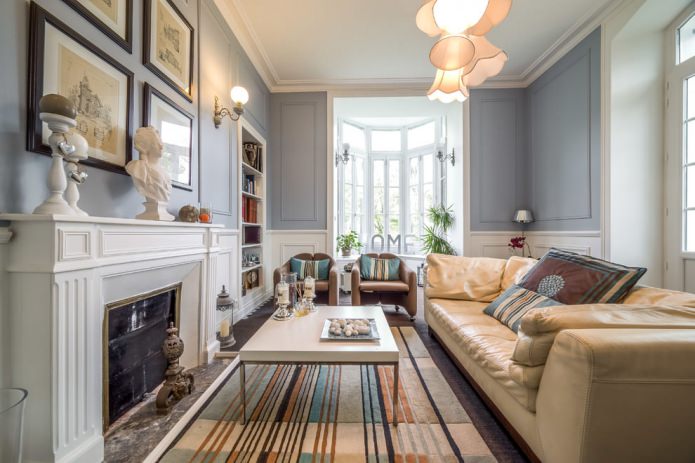
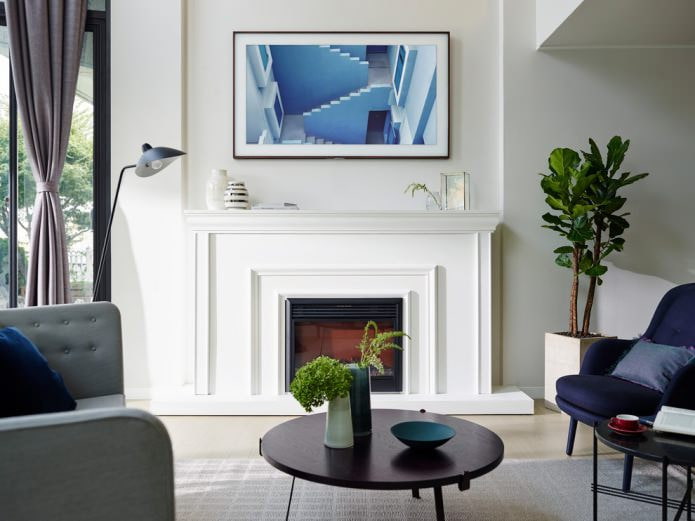
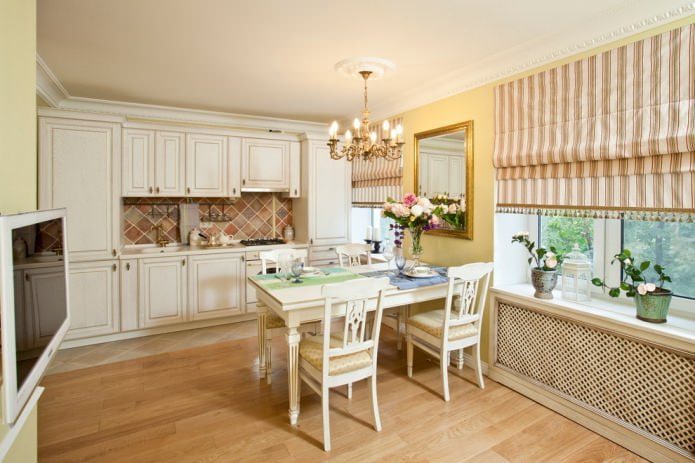
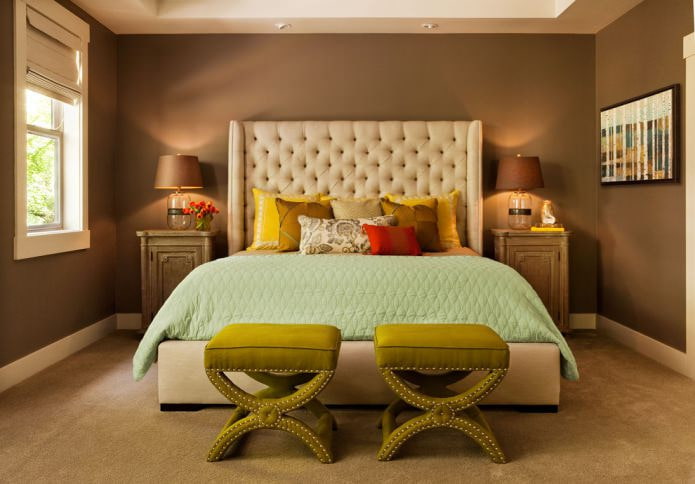
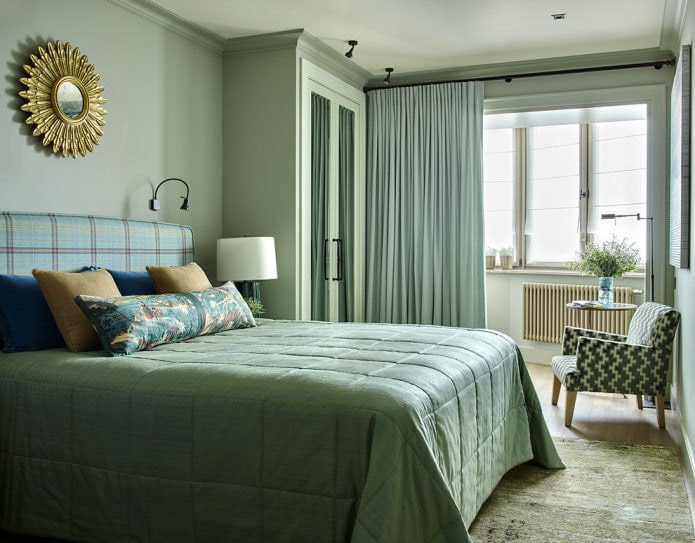
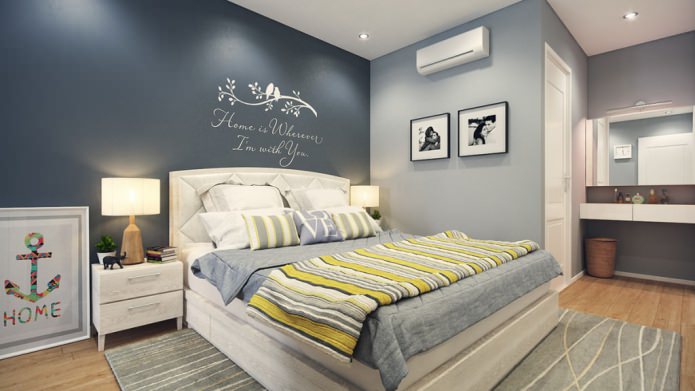
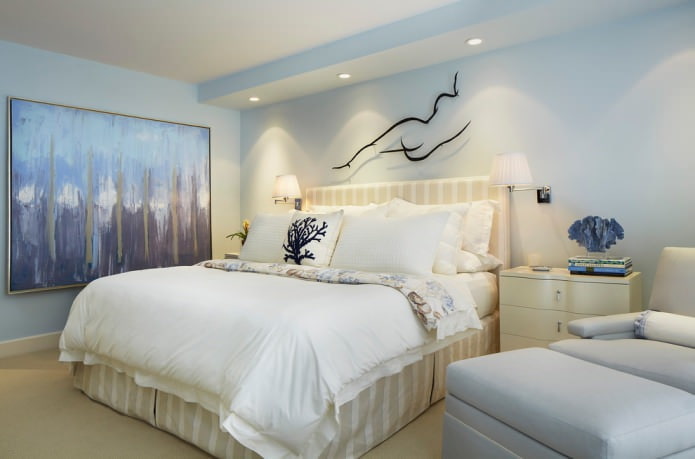
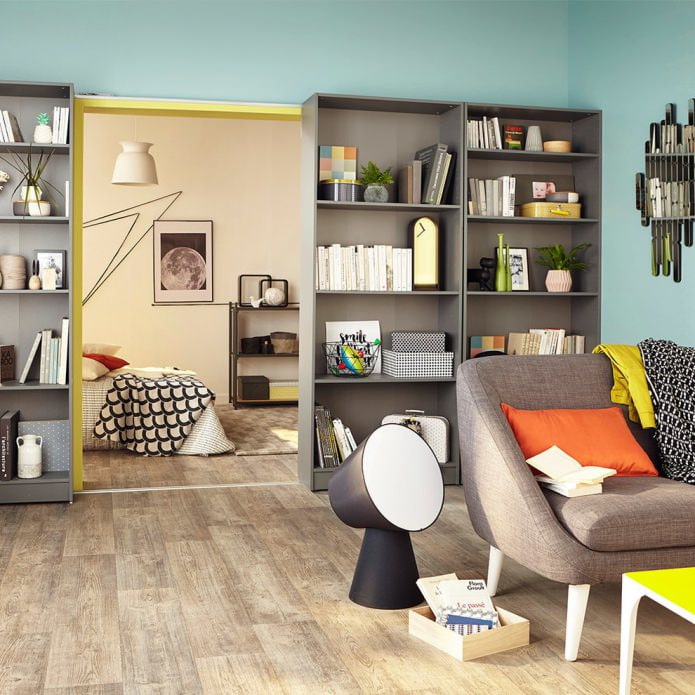

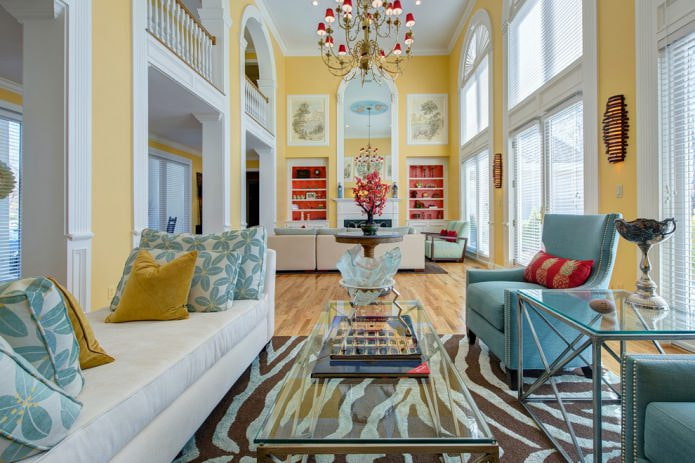

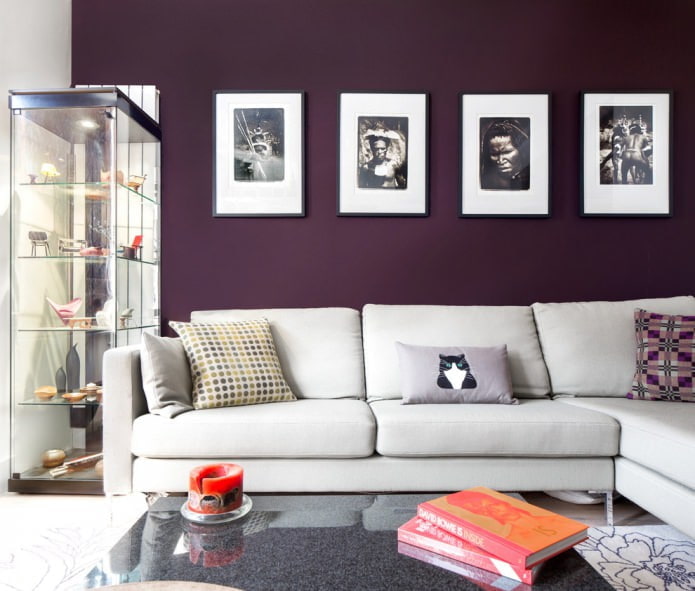
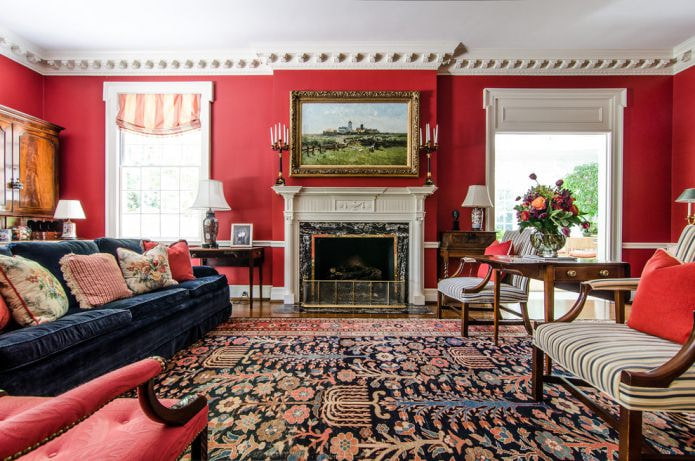
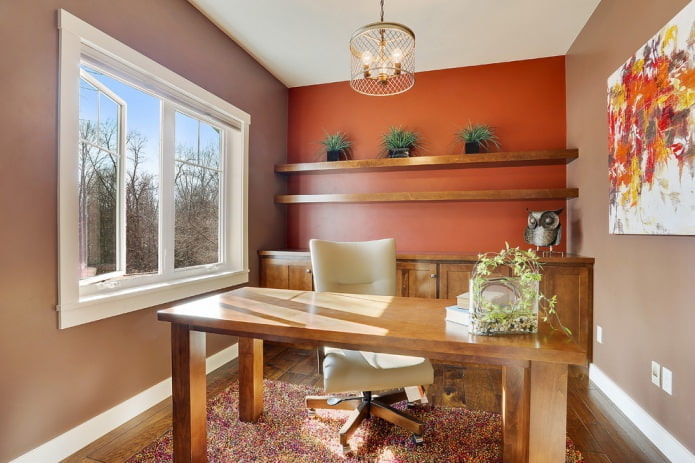
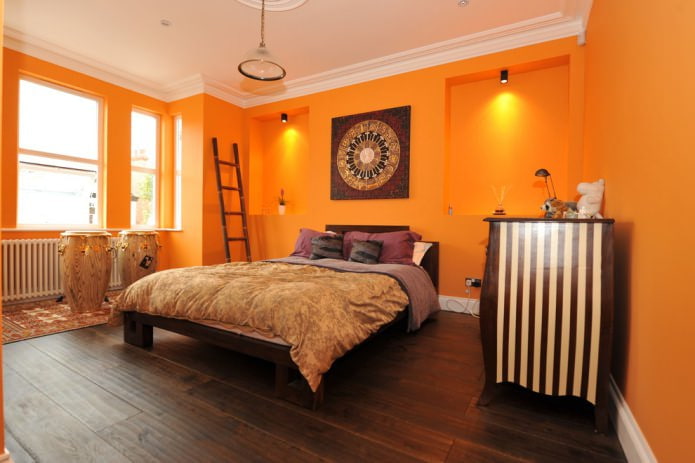
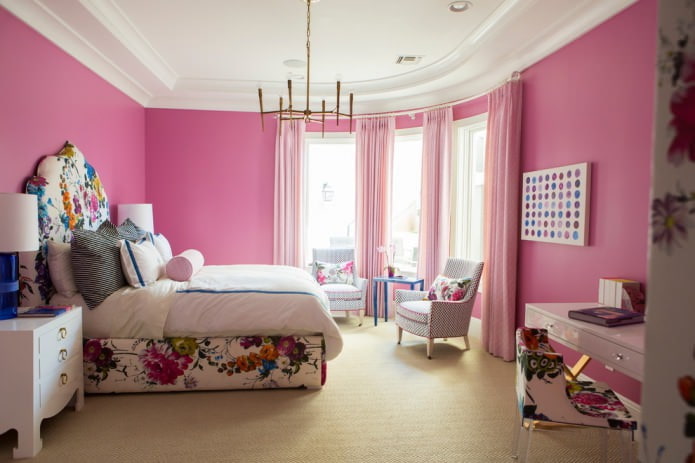
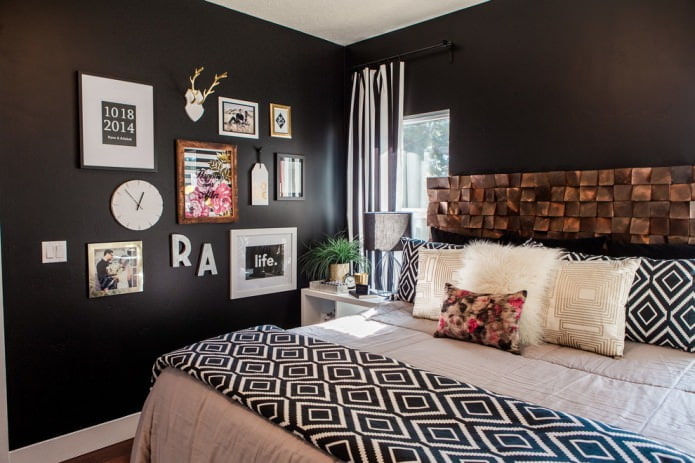
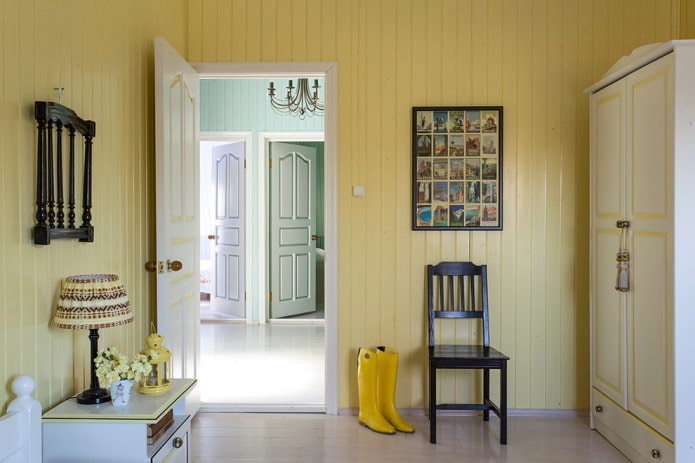
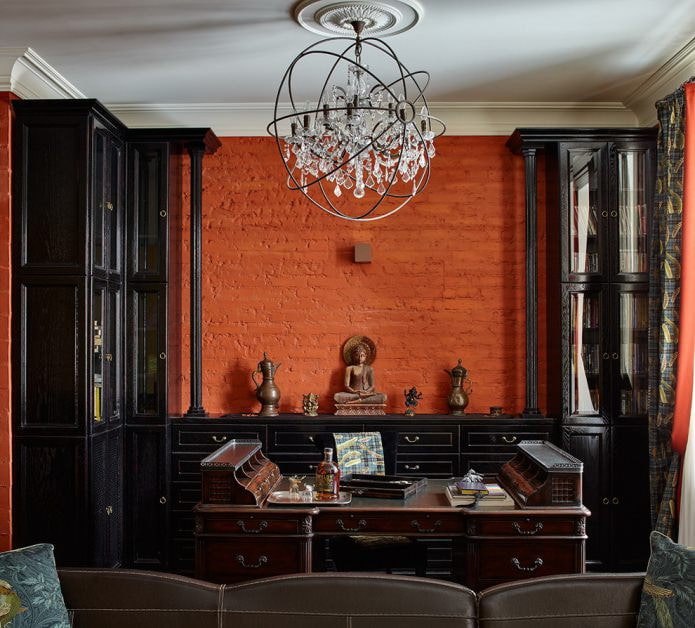
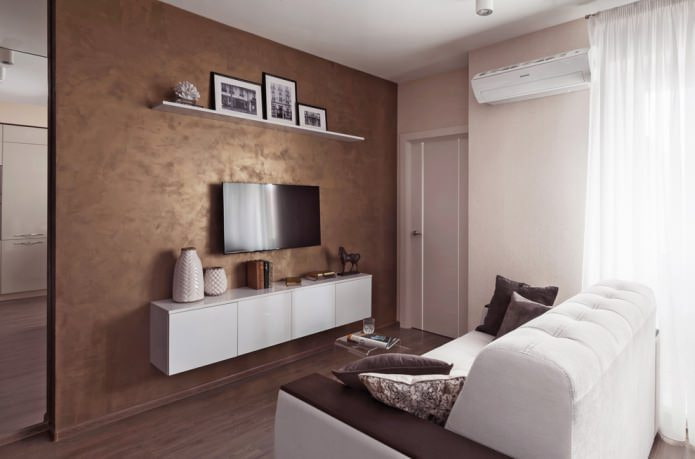
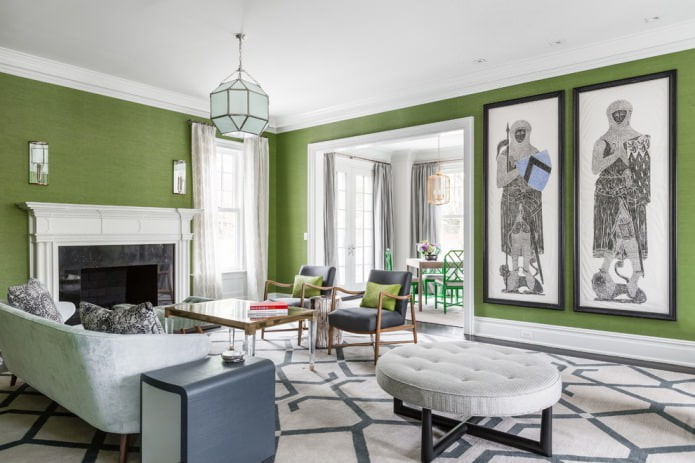

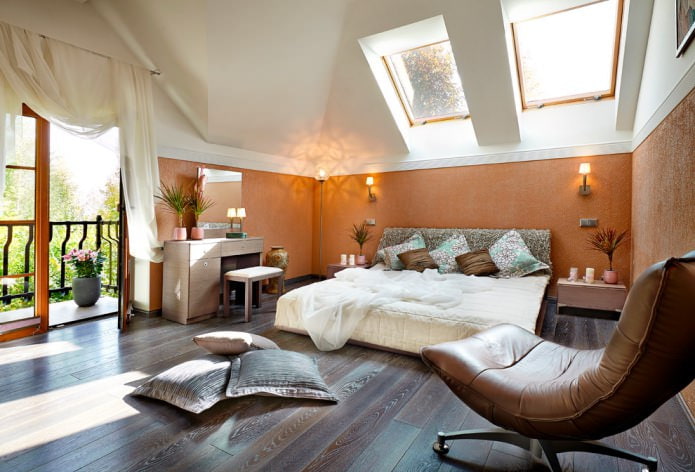
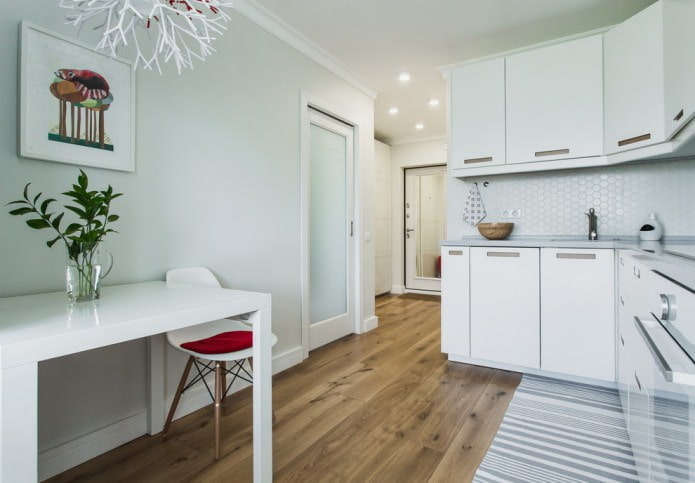
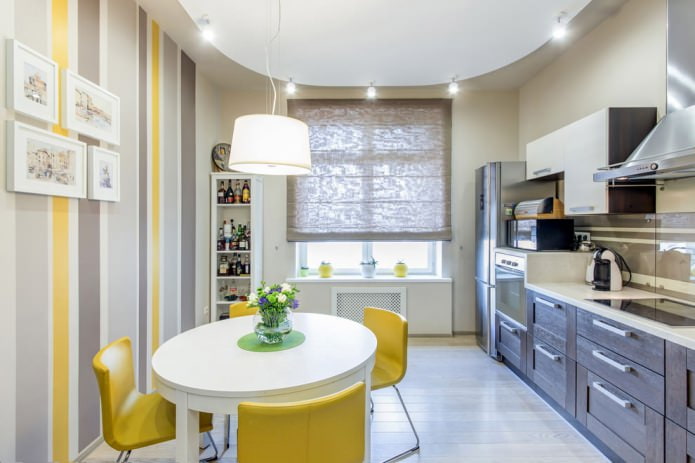
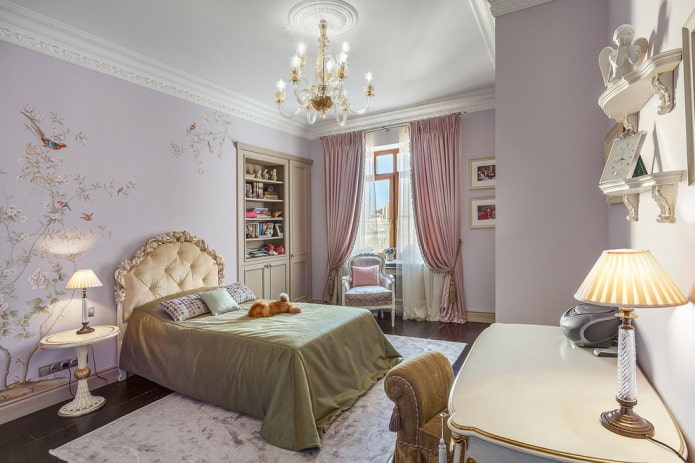


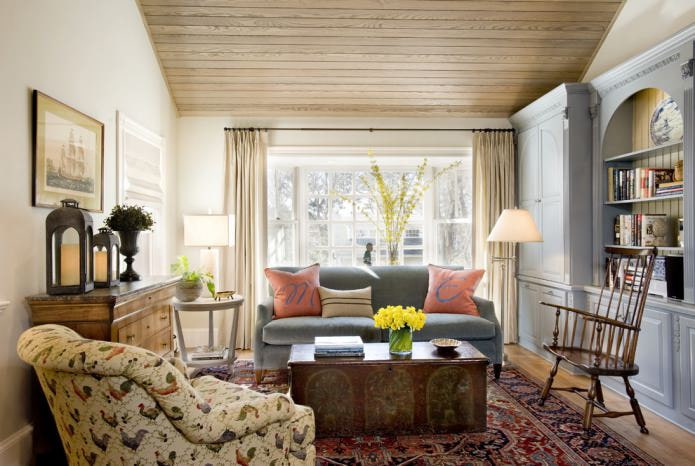
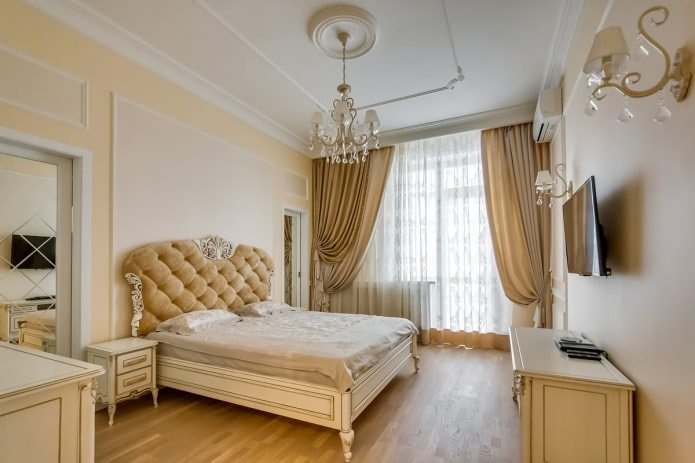
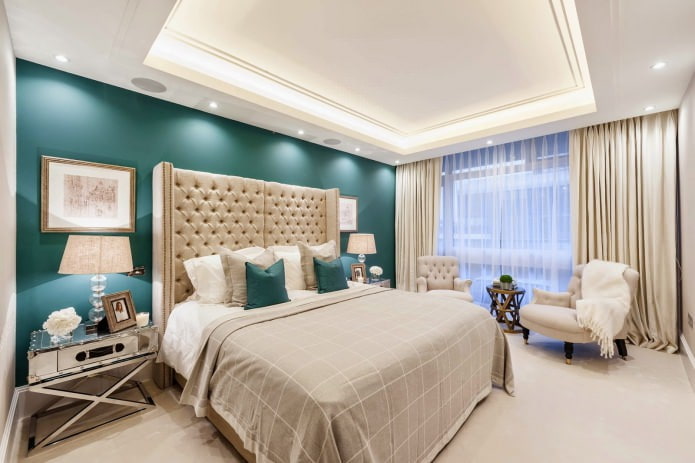
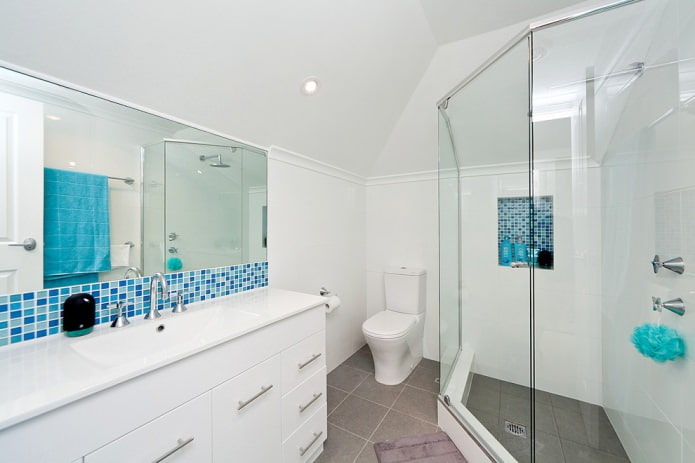
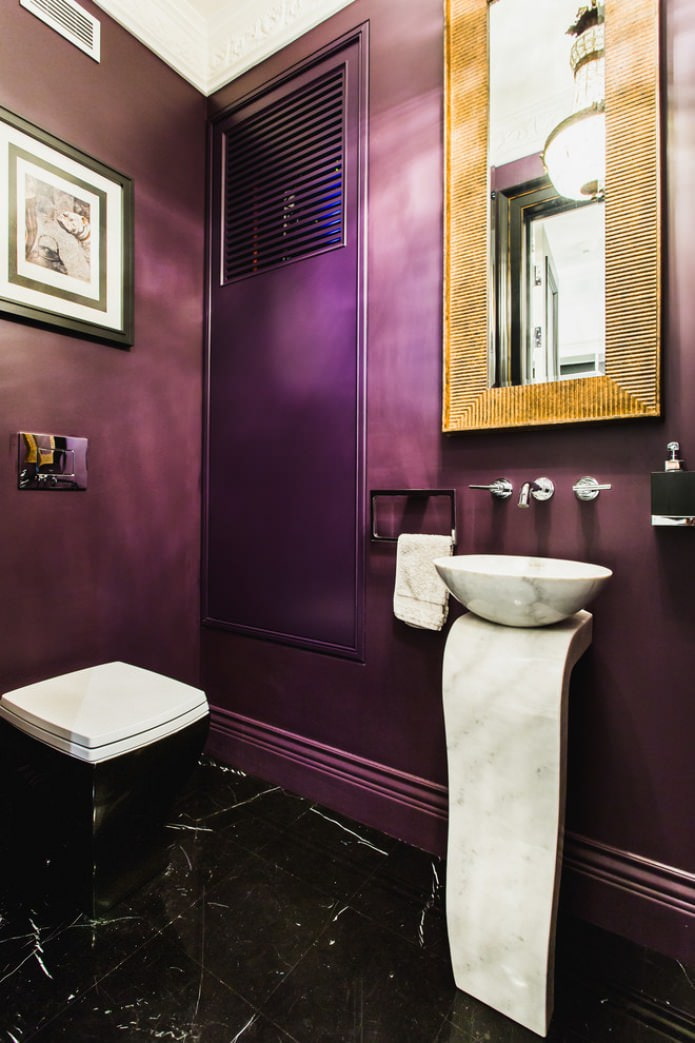
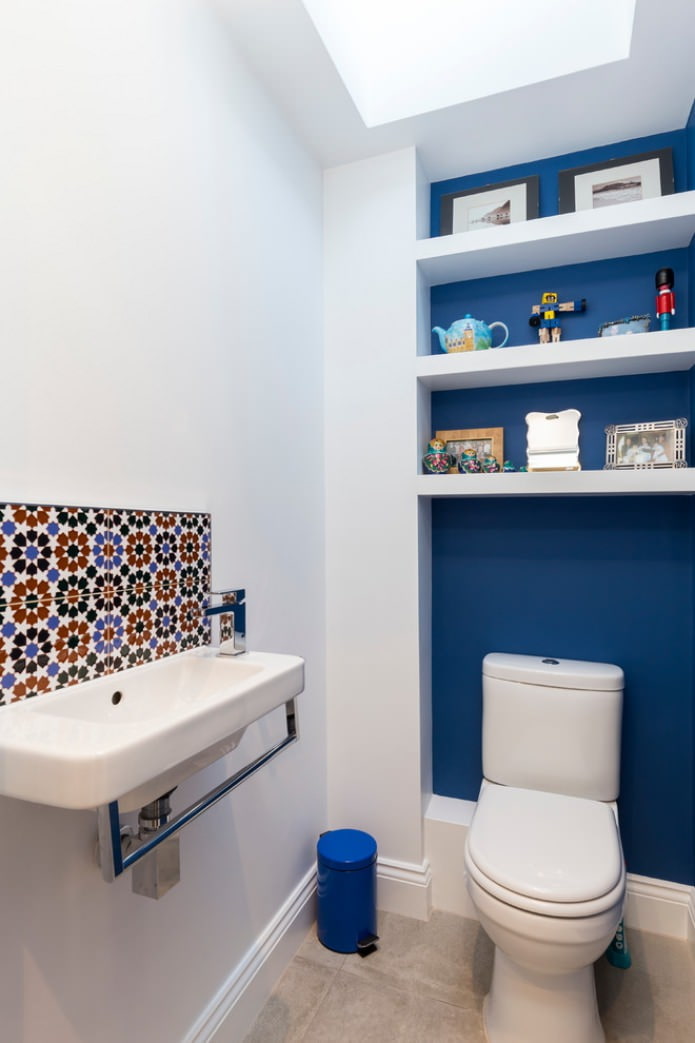
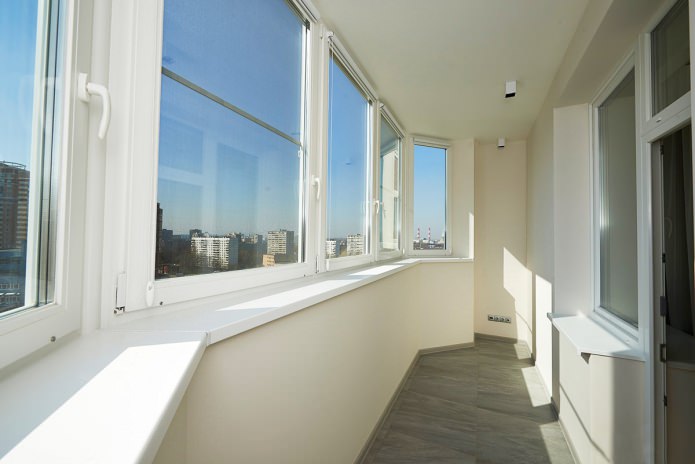
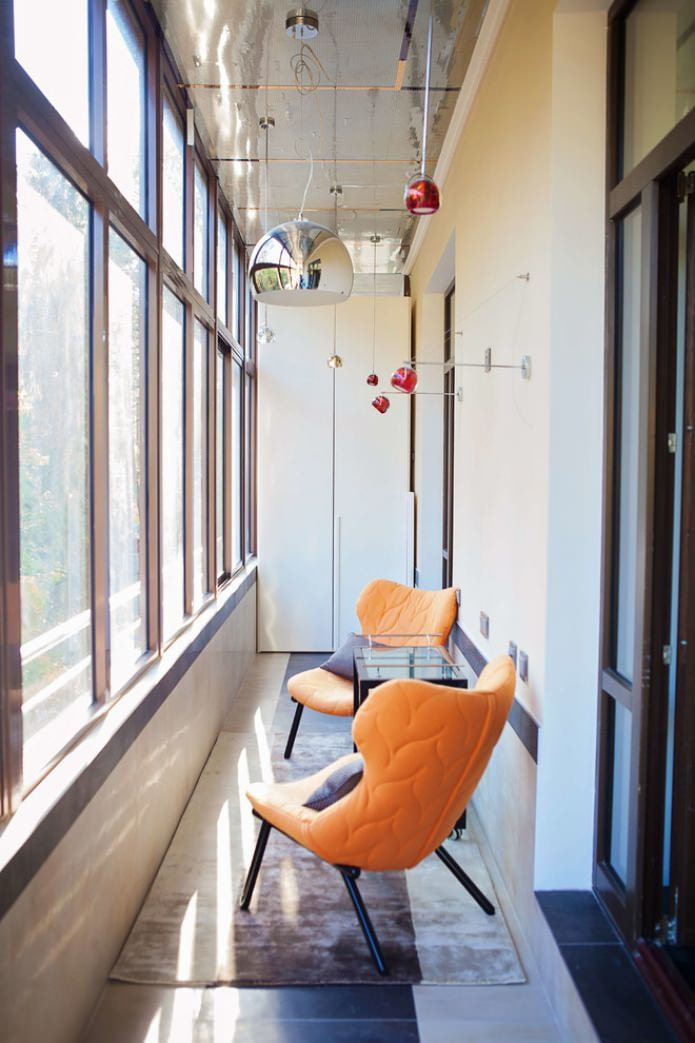
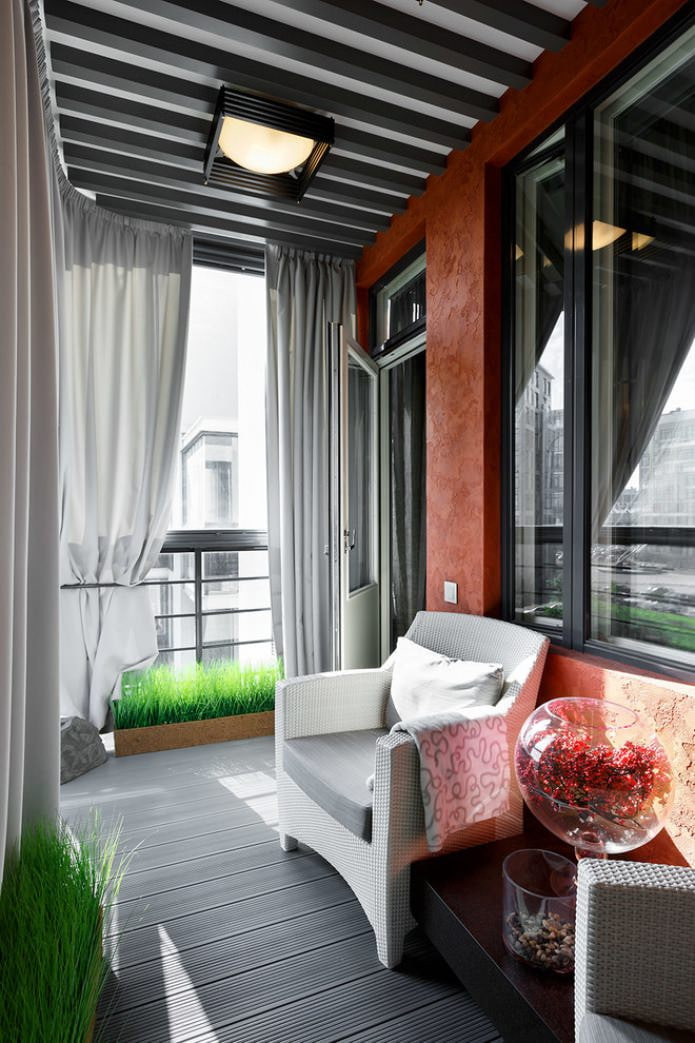
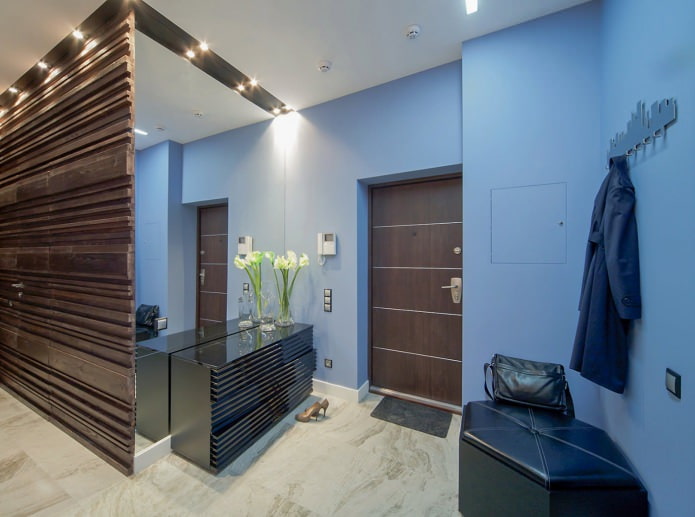
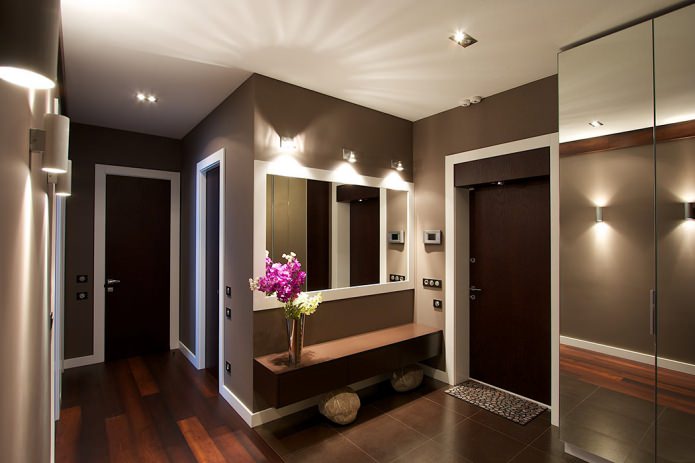

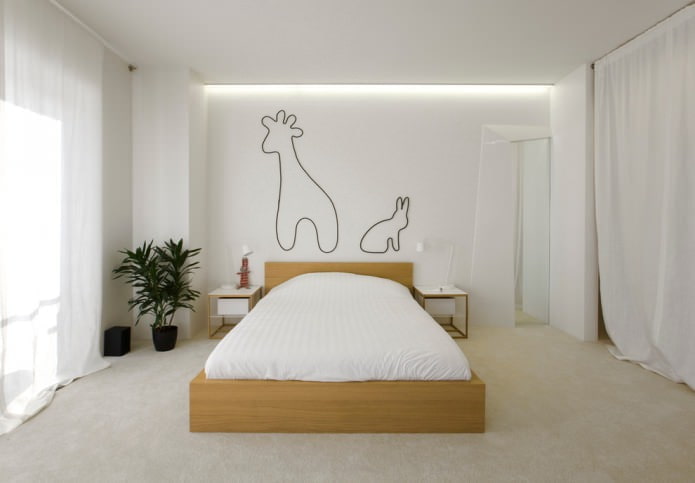
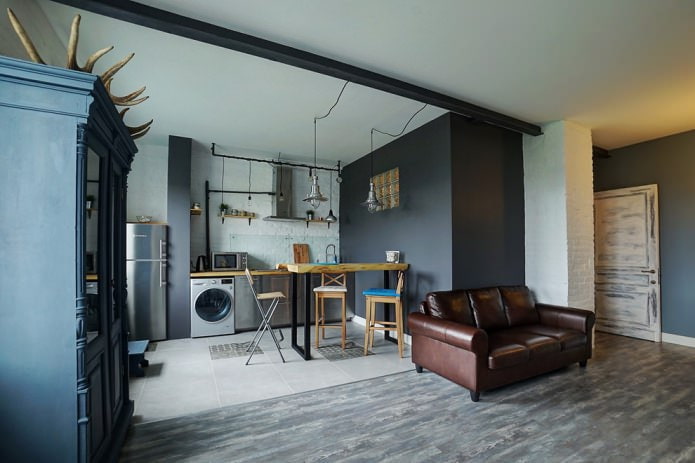
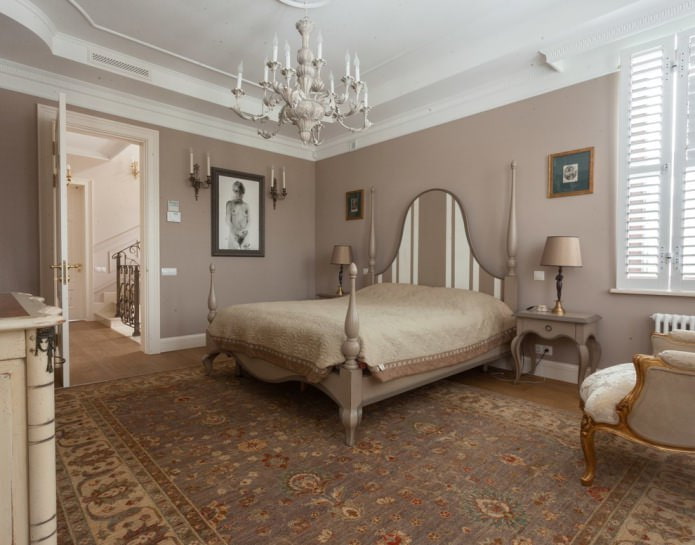
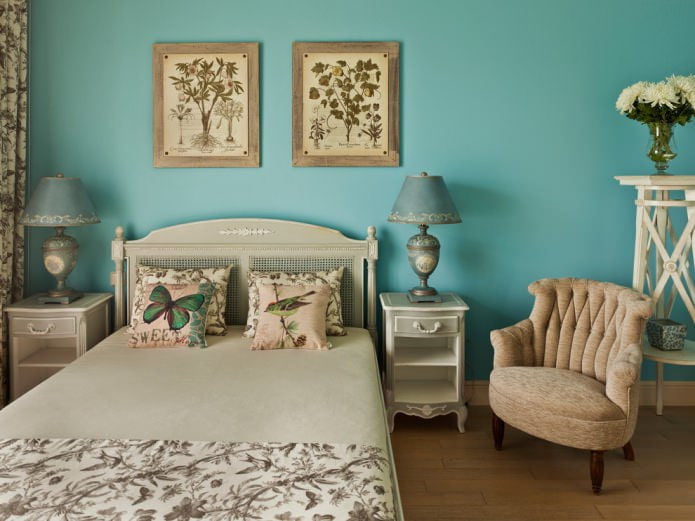

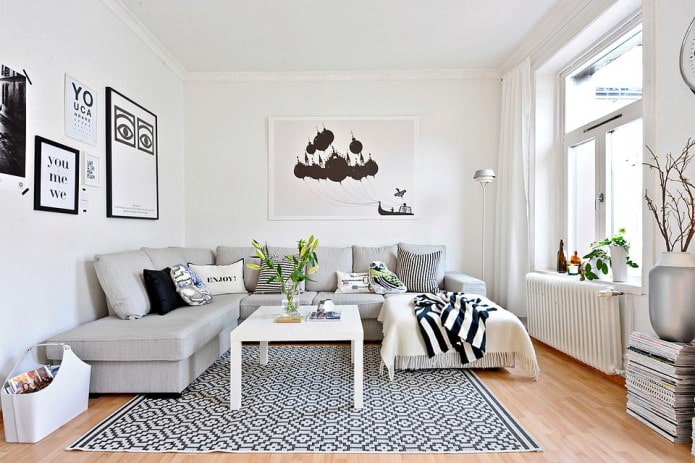
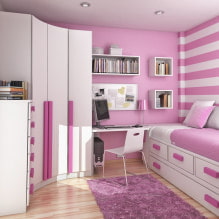
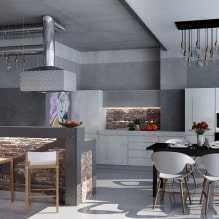
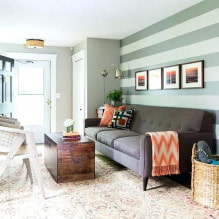
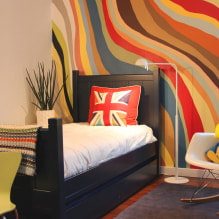
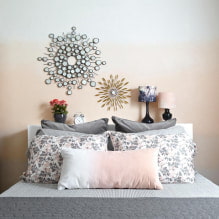
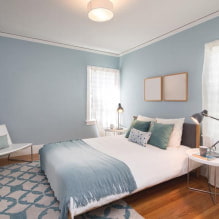


 Top 10 Trends in Interior Design 2020
Top 10 Trends in Interior Design 2020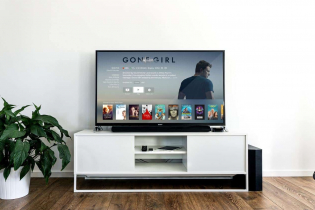 Rating of cheap TVs with Smart-TV
Rating of cheap TVs with Smart-TV New Year's LED garlands on AliExpress - we disassemble while it is hot so that the house is bright
New Year's LED garlands on AliExpress - we disassemble while it is hot so that the house is bright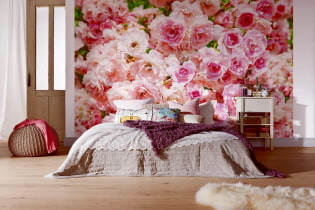 Wall mural with flowers in the interior: living wall decor in your apartment
Wall mural with flowers in the interior: living wall decor in your apartment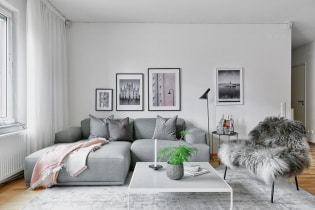 Gray sofa in the interior: views, photos, design, combination with wallpaper, curtains, decor
Gray sofa in the interior: views, photos, design, combination with wallpaper, curtains, decor Interior in peach tones: meaning, combination, choice of finishes, furniture, curtains and decor
Interior in peach tones: meaning, combination, choice of finishes, furniture, curtains and decor